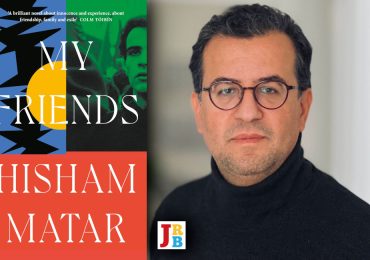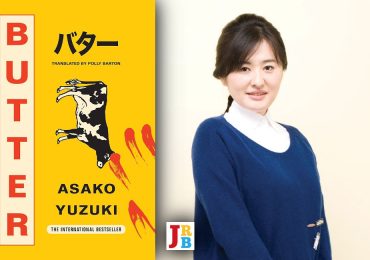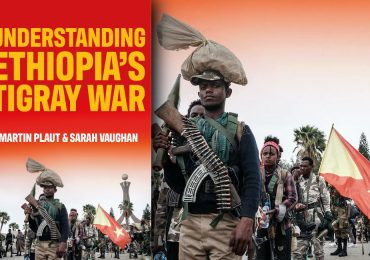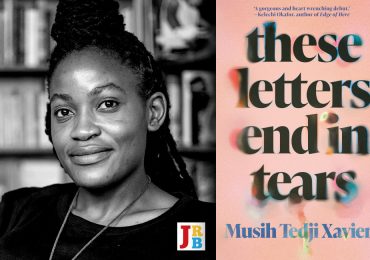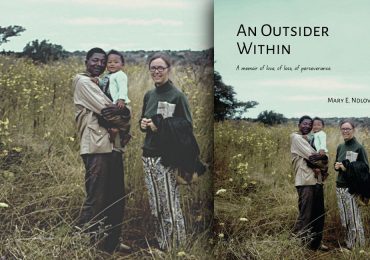There are no easy answers in JM Coetzee’s new novel The Death of Jesus, but the exploration is part of the book’s compelling beauty, writes Angelo Fick.

The Death of Jesus
JM Coetzee
Harvill Secker, 2020
The Death of Jesus, the third of JM Coetzee’s ‘Jesus’ books, continues the story of David, or at least, Simón’s story of David, some years after the second volume ends. Like its antecedents, the novel pursues various questions of ethics, life and death, the role of education and socialisation, and the purpose and consequence of storytelling.
In the first book, The Childhood of Jesus (2013), Coetzee relates the story of how a middle-aged man cares for a young boy and tries to find his mother. Simón, the man, meets David, the boy, on a ship transporting passengers from one life to another. The new life in which the pair find themselves is expressed in Spanish, which they must learn upon their arrival. The first book explores the quest for a mother for David, whom they find in Inés, a woman who is at first ambivalent about mothering the boy, but then becomes fiercely protective of him when she disagrees with the measures the bureaucratic authorities of Novilla insist on imposing on David’s education.
In The Schooldays of Jesus (2016), the elective family have relocated from Novilla to Estrella, and the question of young David’s education becomes even more central than in the first book. His exceptionalism is constantly remarked upon by the various adults who encounter the child, from the stevedores on the docks of Novilla, through the three sisters who own the farm outside Estrella, where Simón and Inés have taken refuge from government scrutiny, and even to the Arroyos, in whose academy David becomes a pupil.
The Death of Jesus (2019) picks up the story of Simón, David and Inés four years after the tragic events at the Arroyos’ academy of dance, in which one of David’s teachers was killed and he suffered the trauma of discovering her body. Now aged ten, David has become an adept player of amateur football, and because of his skill, moves from the reconstituted Arroyo academy to an institution for orphans run by an ‘Educador’, Dr Julio Fabricante.
As the title makes clear, this book tells the story of the end of David’s life in the Spanish world in which he seemed not only extraordinary, but thoroughly alien. At one point Simón reminds the boy, ‘Your mother and I have indulged you as no normal child is indulged, because we recognise that you are exceptional’, and it is perhaps this very treatment inside the elective family that may explain David’s odd behaviour. As Alyosha, the teaching assistant from the Arroyo academy, puts it, David is ‘a child with strange ideas and fantastic stories, a child who has never been schooled, never been tamed, who is afraid of no one, certainly not his teachers, who is as beautiful as a girl yet has a flair for football’. And as a cypher, with an odd, atypical relationship to numbers and language, to human relations and to the world, David becomes the focus of various hopes and aspirations among those around him.
But the reasons the various adults think David exceptional vary and are often at odds with one another. Dr Fabricante recognises David’s exceptional talent at football and, we are led to believe, wants to protect him from what he sees as abuse suffered at the hands of the people David insists are not his parents. Dmitri, the museum attendant who killed David’s dance teacher Ana Magdalena in the second book, and who has ‘come back now like a malign spirit to haunt the child’, wants some sort of spiritual connection with David to satisfy his complex scheme of punishment and forgiveness. He, Dmitri, believes ‘young David is not like us. He comes from another world, maybe even another star.’
Amid this muddle of beliefs about his exceptionality, David himself confronts those around him with profound questions, often relying on the why-regress to interrogate the insecure foundations on which the world relies for certainty in the face of questions about existence and ethics. Simón’s antagonist Dmitri expresses it best when he suggests ‘your son is not asking you to parse sentences. He is asking why he is here. For what purpose. To what end. He is demanding an answer to the great mystery that confronts us all, down to the humblest microbe.’ And, as he suggests, David ‘learned long ago that you don’t have answers to anything.’
David draws comfort from the copy of Don Quixote Simón procured from the Novilla public library, which he has brought with him to Estrella, and through all three of the ‘Jesus’ books. But now, instead of using it ‘to practise his Spanish reading, because like all of us, he had to master his Spanish ABC’, Simón tells the adults and children gathered at David’s hospital bed, ‘He read the book so many times that it sank into his memory. Don Quixote became part of him. Through his voice the book began to speak itself.’ Simón’s understanding of how the Cervantes novel has influenced David reflects the ways in which all the ‘Jesus’ books are concerned with intertextuality and storytelling.
The life of David shares resemblances with the life and death of Jesus, which echoes and mirroring Coetzee teases his readers into exploring. Are Simón and Inés in some senses like Joseph and Mary? Is Dmitri like Saul become Paul? Or are those the very sorts of projections that David himself becomes enthralled to when he conflates Quixote and Cervantes, when he struggles to separate the real from the fictional, the world from how it is imagined? There are no easy answers in The Death of Jesus, but the exploration is part of the book’s compelling beauty.
These questions are not new territory for Coetzee, who has confronted philosophical questions through his novels and across his entire body of work by exploring the relationship between fiction and philosophy. In a conversation between Simón and David in the heart of The Death of Jesus, the relationship between thought and imagination is explored explicitly when the man tells the boy: ‘Philosophy tells us when there is nothing more to say. Philosophy tells us when to sit with our mind still and our mouths shut. No more questions, no more answers.’ But of course, into that silence comes story: ‘Don Quixote is allowed to cross the seas and come here, but he has to do so in a book […] He cannot appear to us as flesh and blood.’
The prose, as always with Coetzee, is masterful, spare and beautiful, and The Death of Jesus can be read as an example of what Edward Said termed ‘late style’: work that has ‘the power to render disenchantment and pleasure without resolving the contradiction between them’. In this book Coetzee returns not only to the motifs and thematic concerns of the earlier ‘Jesus’ books, but to matters that have concerned his practice as a writer and thinker for four decades. The idea of expressing an alternate world in Spanish first occurs in In the Heart of the Country (1977). The complex relations of fatherhood and loss are touchingly and intimately examined in The Master of Petersburg (1994). Confrontations with illness, age and death will be familiar for readers of Age of Iron (1990), and how desire complicates such confrontations were explored in Slow Man (2005). Questions of guilt, complicity, implication and suffering were there in Dusklands (1974) and Waiting for the Barbarians (1980). And Coetzee’s interrogation of the nature and function, as well as the consequences, of storytelling in making sense of the world became explicit in Foe (1986) and Diary of a Bad Year (2007).
David, like his predecessor in Life & Times of Michael K (1983), is the cypher through which we are encouraged to confront ourselves with questions of ethics and morality, while simultaneously being lost in the power of story. As David himself is swept up in his reading and misreading of Don Quixote (or at least the children’s edition of Cervantes’s novel to which he has access), so we are swept up in the adventures and misadventures of Simón and Inés and David. What Simón promises David on his sick-bed—
I will simply tell your story, as far as I know it, without trying to understand it, from the day I met you. I will tell about the boat that brought us here, and how you and I went looking for Inés and found her. I will tell how you went to school in Novilla, and how you were transferred to the school for delinquent children, and how you escaped, and how we all then came to Estrella. I will tell how you went to señor Arroyo’s academy and were the best of all dancers.
—becomes the novels in the ‘Jesus’ cycle we have read. And just as Simón suggests to David that ‘when you danced you opened people’s eyes to things they had not seen before. So your dancing qualifies as a good deed’, so Coetzee’s novels have opened our eyes, and therefore qualify as his good deed.
The Death of Jesus is a fine addition to Coetzee’s oeuvre, stimulating and beautifully written, for as Dmitri writes to Simón, ‘What we hunger for is not bread […] but the word, the fiery word that will reveal why we are here.’ In reading this book, we are reminded again of the importance of asking this question and others like it, of ourselves, and of one another.
- Angelo Fick is a Director of Research at the Auwal Socio-economic Research Institute (ASRI) in Johannesburg. He taught across various disciplines in the humanities and sciences at universities in South Africa and Europe for two decades, before a brief stint as a news analyst in the broadcast industry. His work has appeared in the Mail & Guardian, The Funambulist Magazine, the Journal of Commonwealth Literature and English in Africa.

